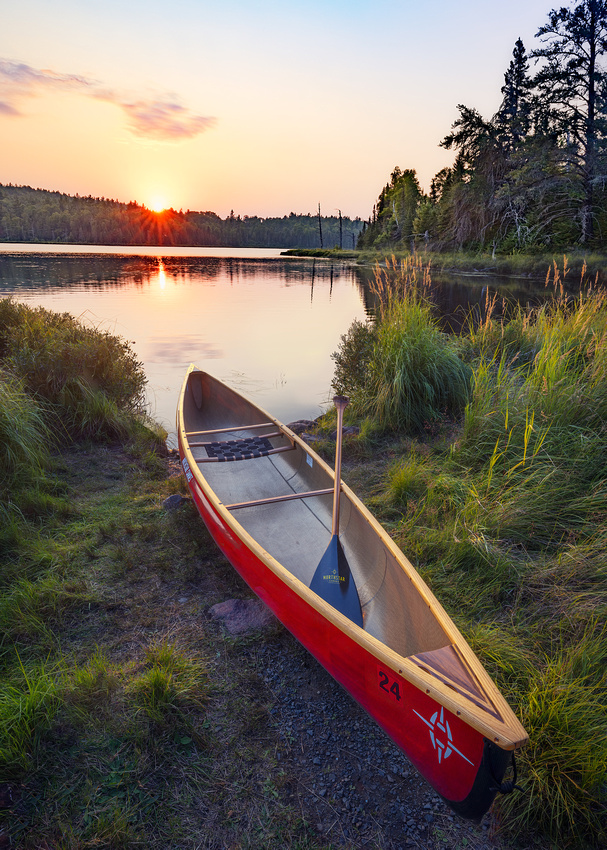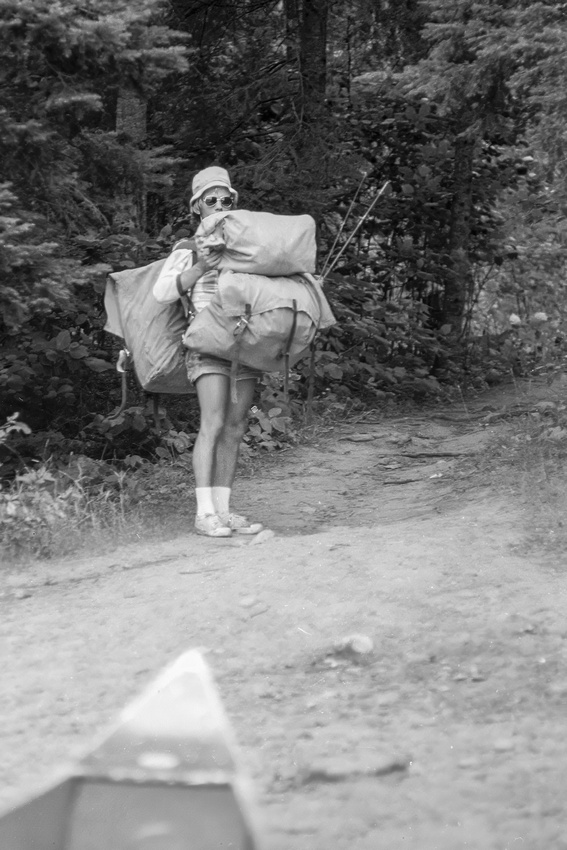Icy Wilderness


It’s the result of ice. Lots and lots of ice.
The million-acre Boundary Waters Canoe Area Wilderness (BWCAW) was formed by glaciers that scraped and gouged the rock of far northeastern Minnesota. The last Ice Age’s alternating episodes of glacial advance and retreat encompassed the period c. 115,000 – c. 11,700 years ago.
When it finally ended, their passage left behind rugged cliffs, crags, canyons, gentle hills, towering rock formations, rocky shores, sandy beaches and several thousand lakes, streams, and islands all surrounded by forest.
The BWCAW extends nearly 150 miles along the international boundary between Canada and the United States. North of the border is Canada’s Quetico Provincial Park while Voyageurs National Park is to the West in the U.S.
The BWCAW offers priceless solitude, challenge and absorption into nature. You won’t see motorized vehicles or many people on its more than 1,200 miles of canoe routes, 12 hiking trails, and over 2,000 designated campsites. You will see black bears, moose, foxes, and deer. And if you drop a line in the water, you’ll be rewarded with trout, walleye, bass, pike, muskie, and panfish.
The area was set aside in 1926 to preserve its primitive character. It became a part of the National Wilderness Preservation System in 1964 allowing visitors to canoe, portage and camp in the spirit of the French Voyageurs of 200 years ago.
My Visits
I’ve been fortunate to spend time in the BWCAW on several occasions. My first trip was during medical school. Eight of us from our Nu Sigma Nu medical fraternity set off during summer break.


That’s me on the far left.
Back then, we either portaged a double pack or a canoe and a single pack. On my last trip there thirty years ago with my son, I was down to a single pack or the canoe.


My medical school roommate Jeff Knutson shows off what a 25-year-old can portage.
Luckily, there’s always down time between canoeing and portaging. For some it’s a book. For others it is sitting down and enjoying the view. I always enjoyed the chance to fish.


Waiting for a bite (fish, not mosquito).
The Shot
Last August I was with Jon Christofersen and several other photographers on a workshop photographing the Milky Way. We stayed in Grand Marais, Minnesota and drove north along the Gunflint Trail Road near the BWCAW every evening for photography.
I wish I could tell you that the red canoe just happened to be at Swamper Lake. But our group leader had brought it along as a prop with this type of image in mind. The scene brought back memories of past serene BWCAW evenings with friends and family.
Since the sky was nearly empty of clouds, I decided to wait for the sun to kiss the horizon. The resulting sun star helped add visual interest to the photo.
Thanks for looking,
Chuck Derus
Comments
In June '69, between 1st and 2nd years of med school, my wife and I did the Bowron Lakes circuit in northern B.C. Our rented canoe was a 90 lb fiberglass tub modelled on the aluminum hulls of that era. Took two of us with two yokes to portage. We had only 6 days and the recommended time was 8+. We paddled like hell taxing our deltoids with heavy solid ash or maybe maple flat blade, long handle paddles, also then in vogue.
During my 36 years of practice we lived on Upper Saranac Lake and had a stable of sleek kevlar canoes, Adirondack guideboats, and carbon fiber bent stick racing paddles to match. Wish we'd had that at Bowron Lakes!